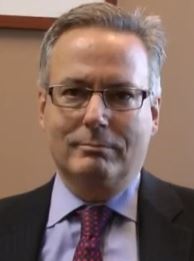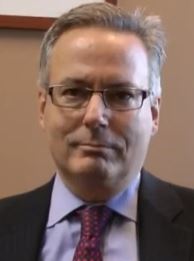 New Covestor portfolio manager Marty Leclerc of Barrack Yard Advisors brings more than 30 years of professional investing experience to the Core International Portfolio now available to our clients.
New Covestor portfolio manager Marty Leclerc of Barrack Yard Advisors brings more than 30 years of professional investing experience to the Core International Portfolio now available to our clients.
Marty began his career at Dean Witter in Washington, D.C. and was based in London for 9 years, focused on the UK, Southern Europe, and the Middle East for Prudential Bache International. He also spent three years at Morgan Stanley in London and served as a Managing Director for Deutsche Bank before establishing Barrack Yard Advisors in 2011.
We had a chance to ask Marty some questions about his new Covestor portfolio, to add a little more color to the descriptions on its portfolio page.
* * *
Covestor: You state in your description of the Covestor portfolio: “We start by identifying major long-term global trends, both to find potential investments and looming risks.” What are some of those investable trends and risks right now, as you see it?
Marty Leclerc: One trend many of our companies are positioned to benefit from is the growth of an emerging middle class in the developing world. Around a billion people will go from essentially eating mostly rice every day to adding much more protein to their diet over the next decade or so. This will have a knock-on effect and presents opportunities for companies in three broad categories.
First, companies that provide the “staples of a better life” such as quality food, education, travel, health care, personal care products and security (around personal safety, retirement income and places to keep assets where they won’t be expropriated).
Second, there is a great need for the infrastructure to support a middle-class lifestyle. Examples here include ports, distribution networks, exchanges and public/private partnerships to keep energy supplies secure, cyberspace crime free and drinking water safe.
Finally, we believe unprecedented demands on limited resources may result in scarcity premiums assigned to certain assets, particularly in the agricultural value chain, from large farms to seed companies; and also in truly high-end luxury experiences.
Another trend has to do with the Shale Revolution in the US. We don’t see this as a linear opportunity. It’s about thinking through the implications of America enjoying lower energy costs. We agree there may well be a sort of manufacturing renaissance in the old rust-belt due to relatively cheap energy and a significant number of middle-class jobs will be created. Accordingly, we own a family restaurant business that is reasonably valued, pays an attractive dividend and has heavy insider ownership. The added bonus is they’re primarily located in Ohio and Indiana and this could give them an additional tail-wind if industry prospers in that region.
The three biggest risks we see currently are (1) slow growth rates due to too much debt and unattractive demographics in many parts of the world; (2) the unintended consequences of so much central bank liquidity pumping and (3) interest rates. The cost of money is phony and creates distortions. We believe the U.S. will not remain a near-zero interest rate world forever and we fear what will happen to many assets once interest rates are allowed to operate in a free market.
What is your definition of an “international stock” for the purpose of your Covestor portfolio? How does that differ from other definitions out there?
ML: I think of international as being outside of one’s country of residence. Given that, I view the Barrack Yard Core Portfolio as being a Global Portfolio as it includes some U.S. companies. But apart from the one U.S. stock mentioned above, all of our American stocks are truly global companies and generate anywhere from 40% to 60% of their revenues from their foreign operations.
Is there an international stock index that you benchmark against?
ML: I don’t consciously benchmark. I try to buy great businesses at good prices and good businesses at great prices. But with that said, I believe the Dow Jones Global Index is a fair Index to compare us against.
Many U.S. investors who want to allocate more to international stocks find themselves in a bind: the larger global stocks can be highly correlated to the U.S. market and exposed to the dollar, but the smaller stocks lack the sort of long term, healthy balance sheets that you also seek in your portfolio. What are your thoughts on this?
ML: There are indeed many great global non-US businesses that are highly correlated to the US. For many of the European ones you’d never know there’s a recession going on over there, given their lofty valuations. But we are selectively finding European and Asian companies that are priced at recession valuations, both in the large-cap and smaller-cap space. If you stay away from certain sectors, Europe can be a contrarian’s delight and offer excellent long-term opportunities because the markets are pricing many companies as if Europe will never see prosperity again. We think cycles come and go and we’re happy to potentially earn dividend yields of 7%+ in many instances while we wait for the macro-environment to improve.
Your focus is on developed world markets. What are the challenges of investing in that space right now and how do you try to navigate them?
ML: The challenge, given that cheap money is a worldwide phenomenon and asset prices everywhere are probably artificially pumped up, is finding good companies at attractive prices. We navigate through this environment as we always have: by adhering to our 5 Enduring Principles and subjecting each company to our robust investment process.
You are rather heavily in cash right now (27%) for this portfolio. Why is that?
ML: When we joined Covestor as a portfolio manager a few months ago, global markets were in a big rally mode. That concerned us because we believe focusing on valuations, the price you pay for assets, is the best protection and so many of the companies we follow as potential investments were just too expensive. So, we’ve eased into building the Covestor portfolio by waiting for our pitch. If the current market correction continues, rest assured we’ll find attractive entry points in which to invest the remainder of the cash and become fully invested.
Thanks so much, Marty.
ML: My pleasure.
Photo: Horia Varlan


